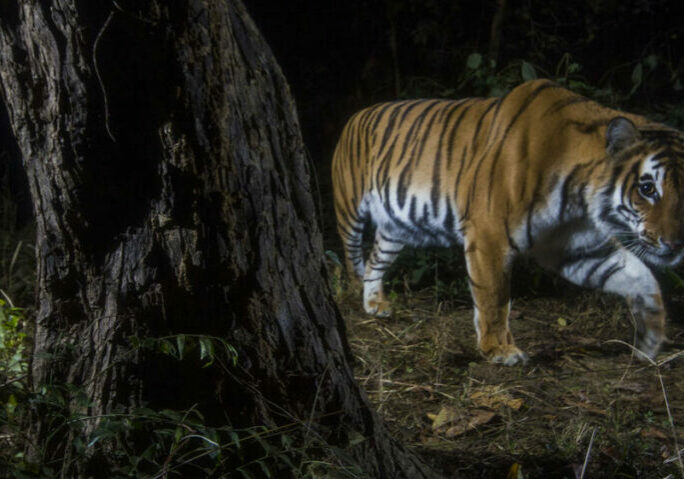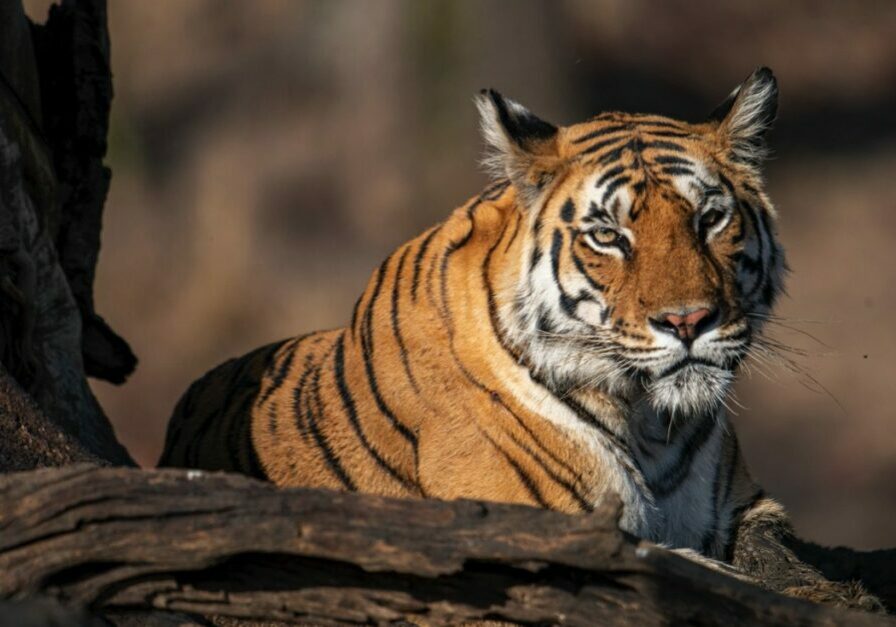Bishnu Prasad Thapaliya has devoted his life to protecting wild tigers. He began working in tiger conservation when he was just 16, and now, in his sixties, he’s still a vital part of any tiger-monitoring project in Nepal.
An innate understanding of – and love for – the wildlife and landscape of Nepal drives Bishnu’s passion for his work. Technology and teamwork also play their part, as Bishnu and his colleagues use cameras, GPS, compasses and other instruments to record details of tigers and their prey.
We documented one of Bishnu’s expeditions in the sub-tropical forests of Nepal’s Terai Arc, recording a typical day for the team. The area is home to rhinos, elephants and numerous species of birds, but Bishnu will be tracking tigers…
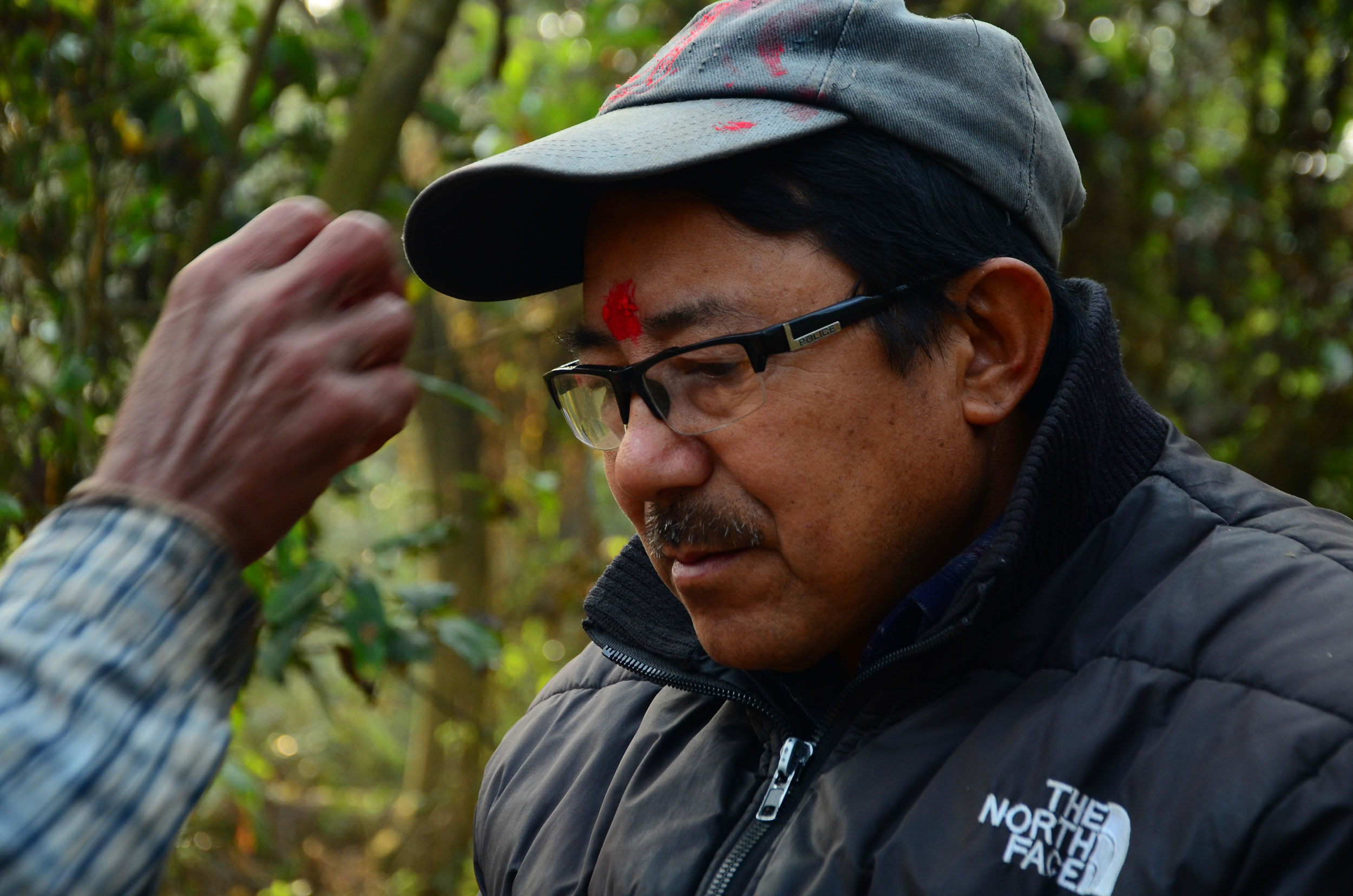
Before every expedition, Bishnu and his team perform a short ceremony to seek the blessing of Ban Devi, or the Forest Goddess. They might face harsh weather conditions or encounters with wildlife. Rice, flowers and red vermilion – the colour of life – are sprinkled on a stone under a tree in the forest. Each team member rubs a little vermilion on their forehead to mark the end of the ceremony. Now the expedition can begin.
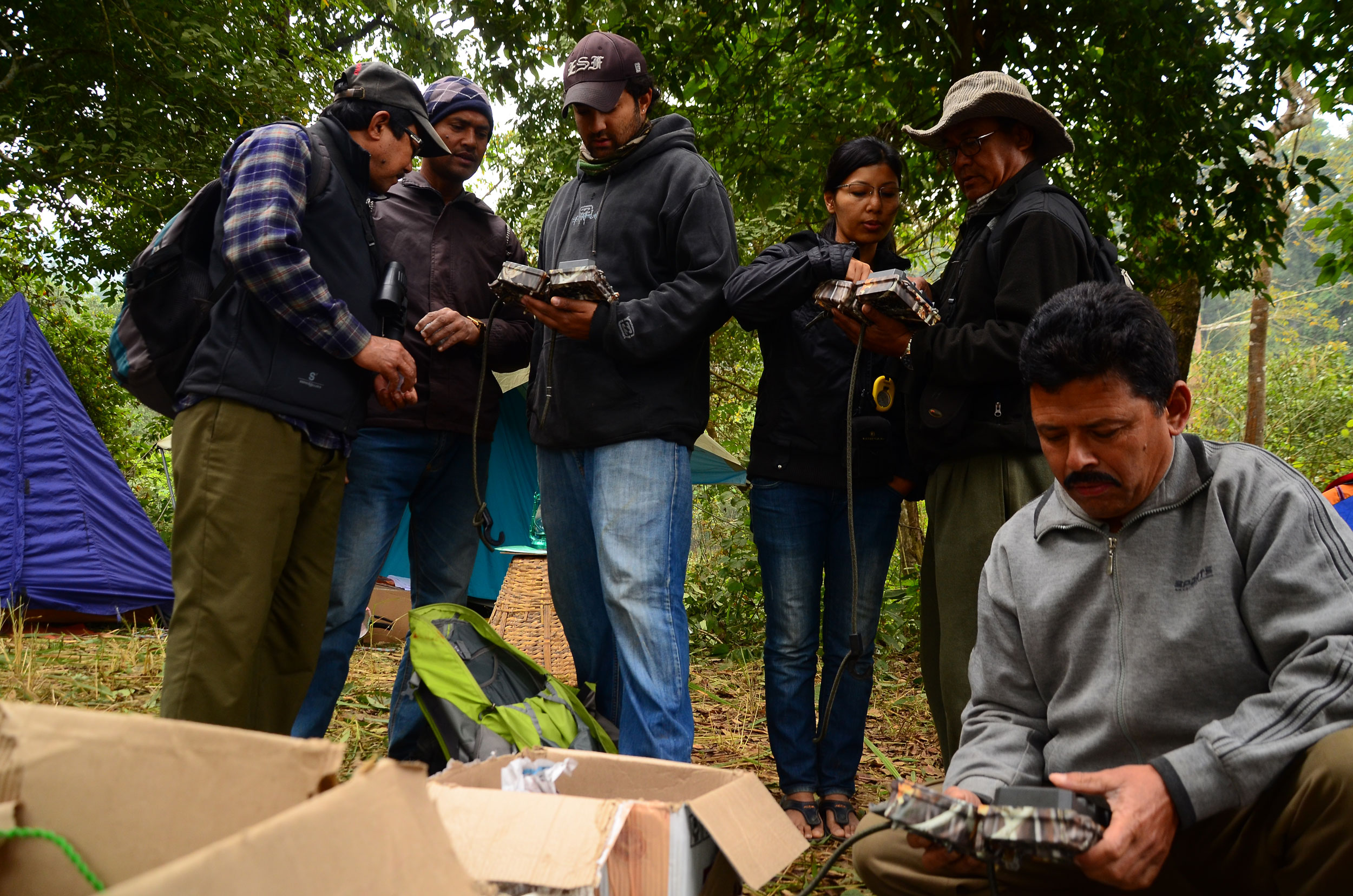
Back at camp, the team plan the day’s tasks. They identify one of the 4 sq km areas that they need to study, Nakkali Khola, an hour’s walk away. They also select the pair of infrared, motion-sensing cameras that they’ll be installing and check them carefully – a whole day could be lost if they find the equipment is faulty and have to return to camp.
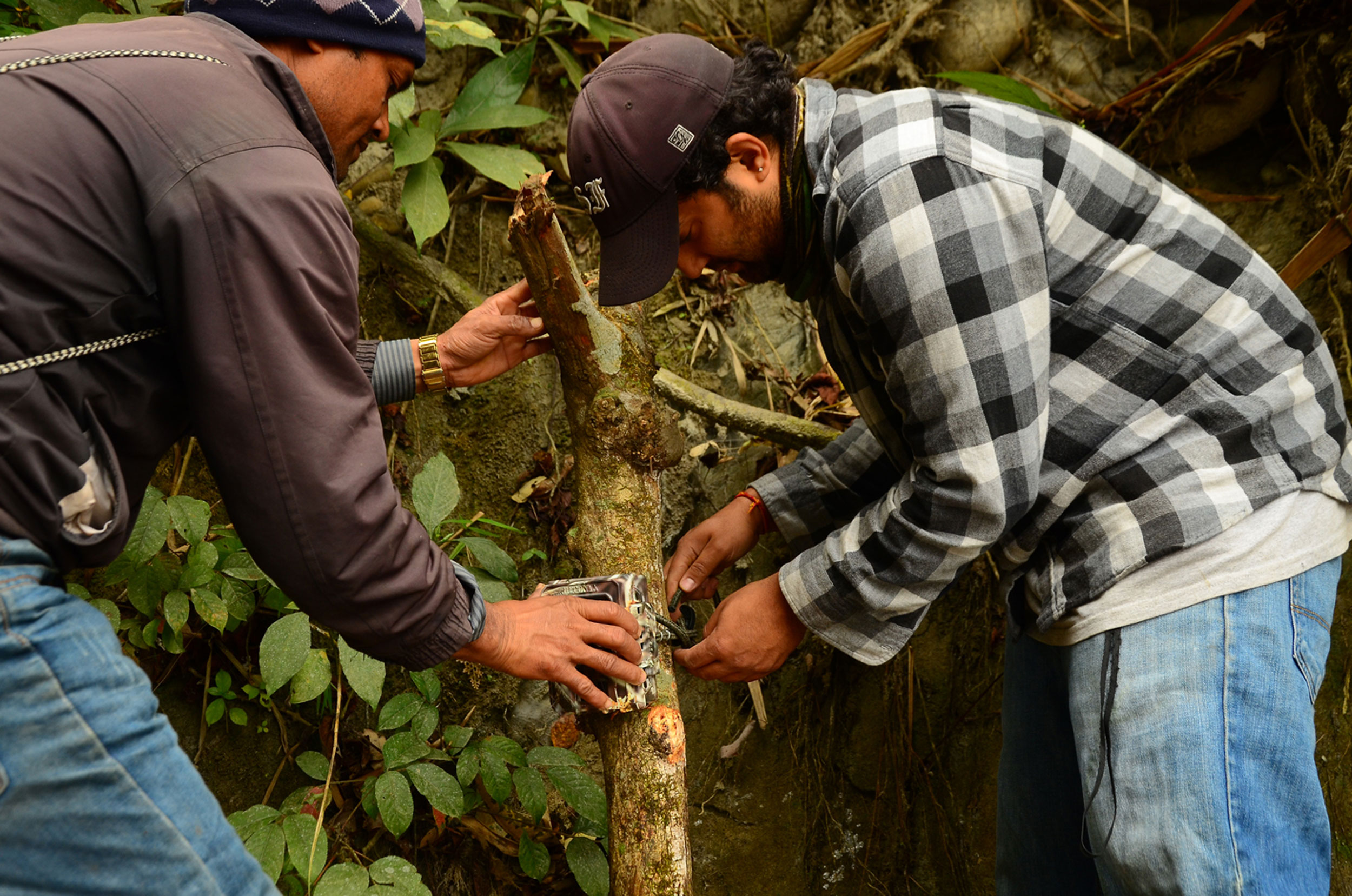
The installation site is near a stream that feeds into the Rapti river. Bishnu’s team have spotted tiger tracks here – the big cats are likely to come this way to drink from the river. Each camera is mounted on a wooden pole, about 40cm from the ground and eight metres apart. Having the cameras in these positions means tigers can be photographed from both sides.
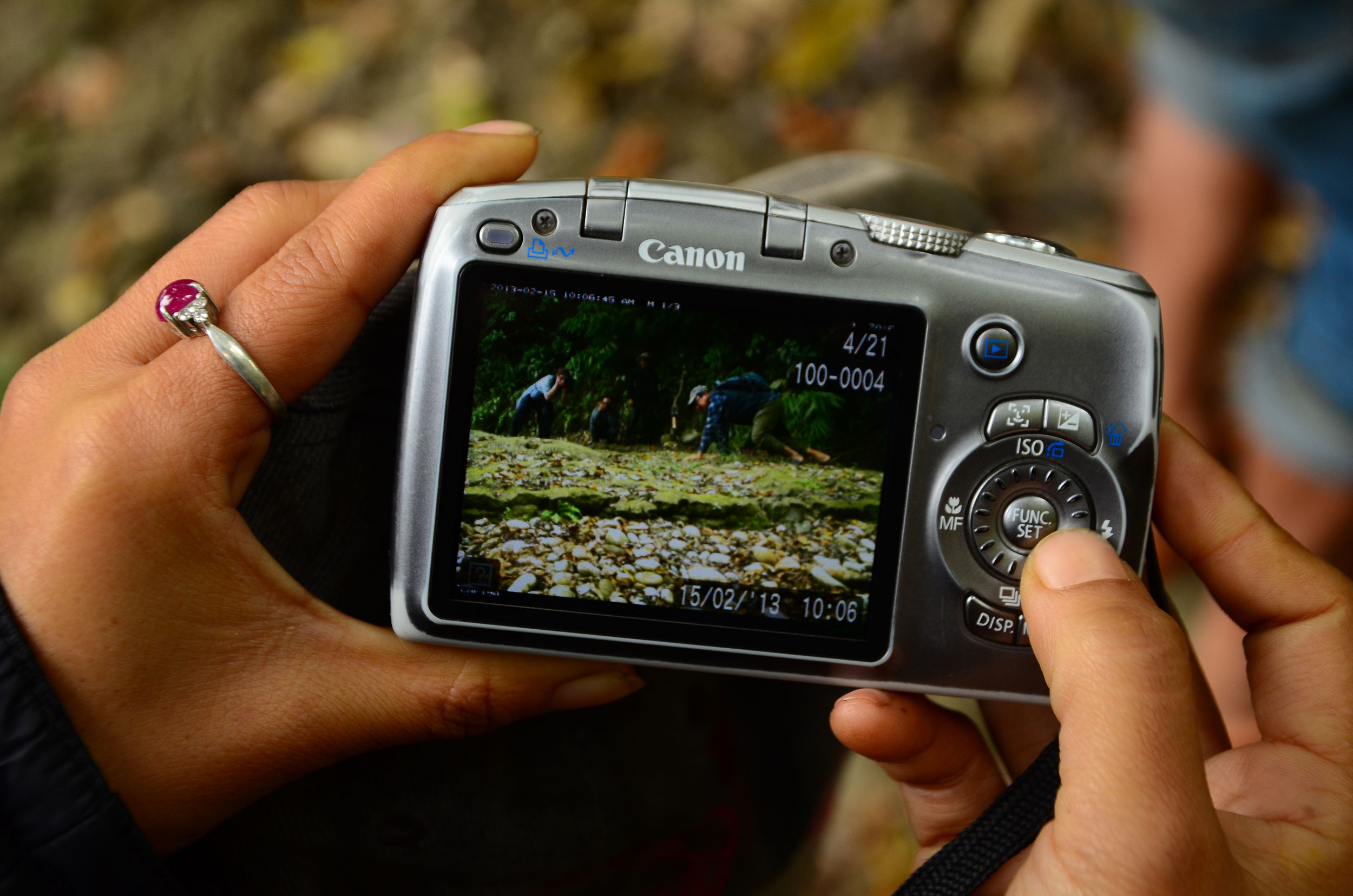
Bishnu performs the ‘tiger walk’, prowling past the cameras on all fours to check their placement. The team confirm that the cameras have been set up perfectly, so they’ll be left in place for 15 days. The photos captured by these cameras will enable the team to identify individual tigers by their stripe patterns, helping to estimate tiger populations.
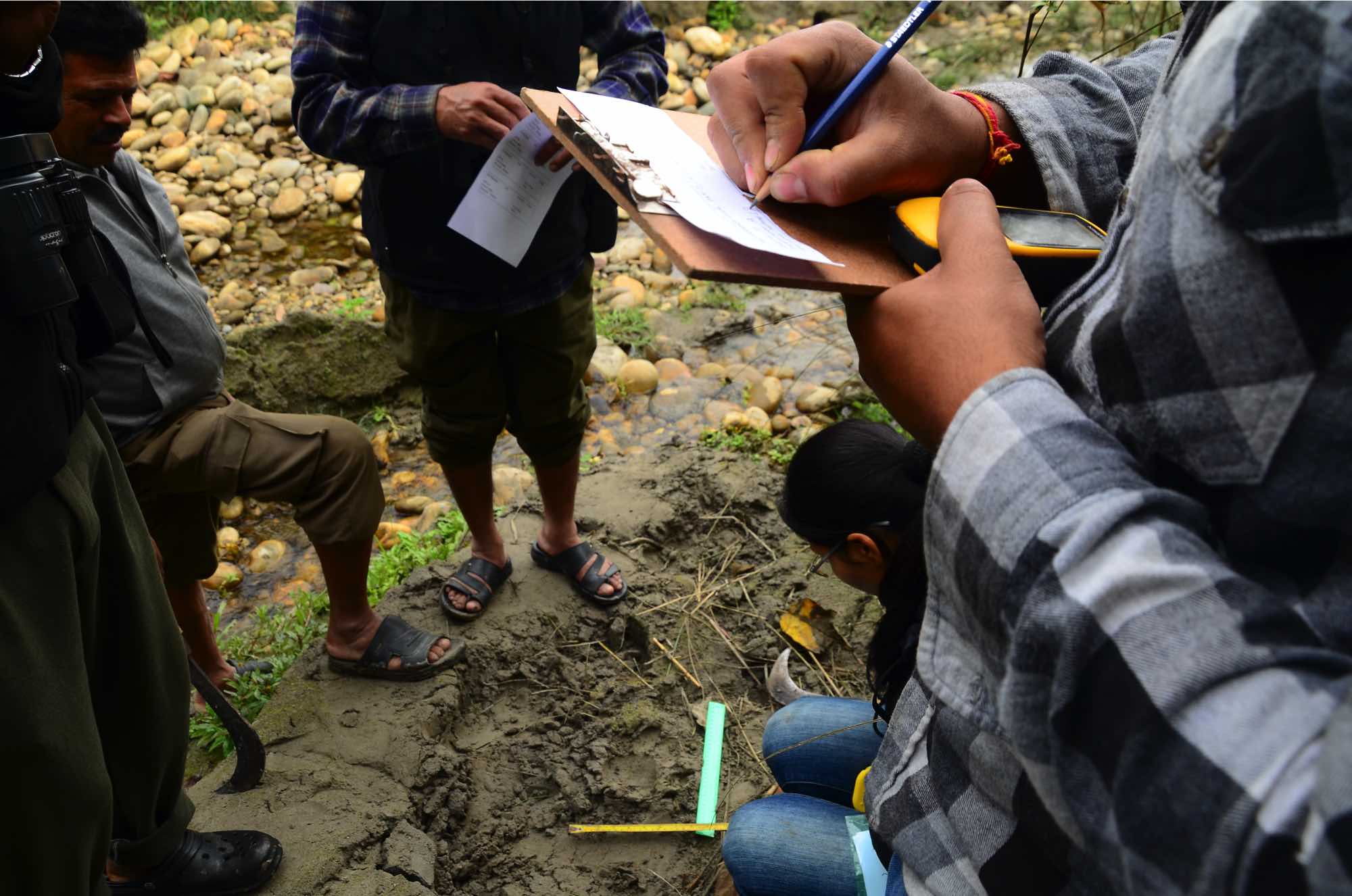
With the cameras safely installed, the team conduct an occupancy survey of the area to get a better understanding of which areas are being used by tigers and their prey. They walk 2km along the Narayani river bed and are delighted to find a continuous track of tiger pugmarks (pawprints). The marks are photographed and the details recorded on a data sheet.

A line transect survey is a way to record the density of a prey species in an area. When the team see some hog deer, they quickly make a note of the number and sex of the deer, and use a range finder and compass to accurately record their position. A healthy tiger population needs good habitat and plenty of prey, so it’s just as important to record prey populations as it is to monitor tigers.
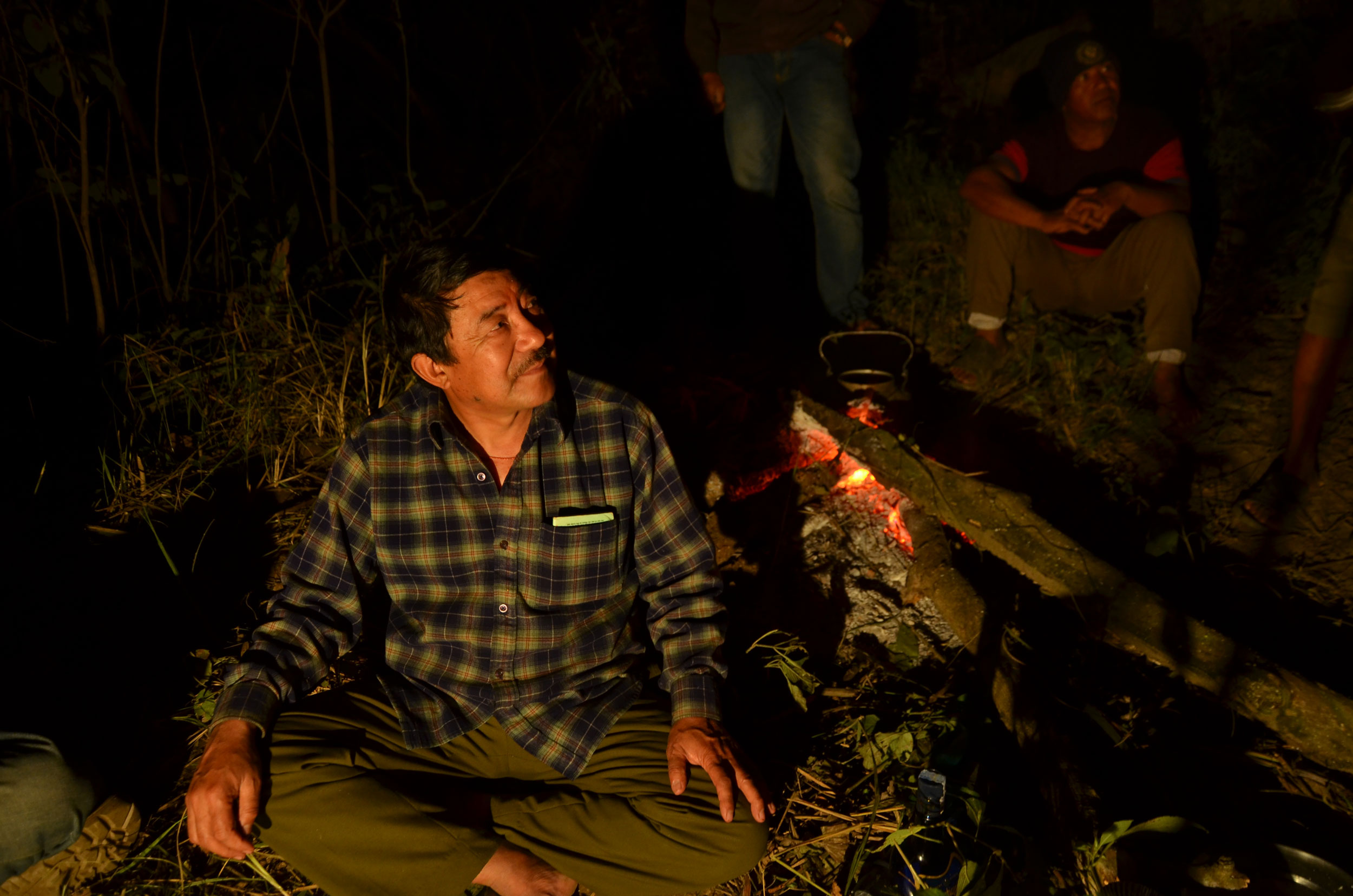
It’s almost sundown by the time the surveys are finished, so the team head back to camp. The first day of their 20-day expedition has been a success. The fire is lit, dinner is cooked and Bishnu tells one of his many tales from previous tiger-tracking trips. His passion for tigers is undimmed, and tomorrow his team will continue their work.
ALL IMAGES: © WWF-NEPAL
More to explore
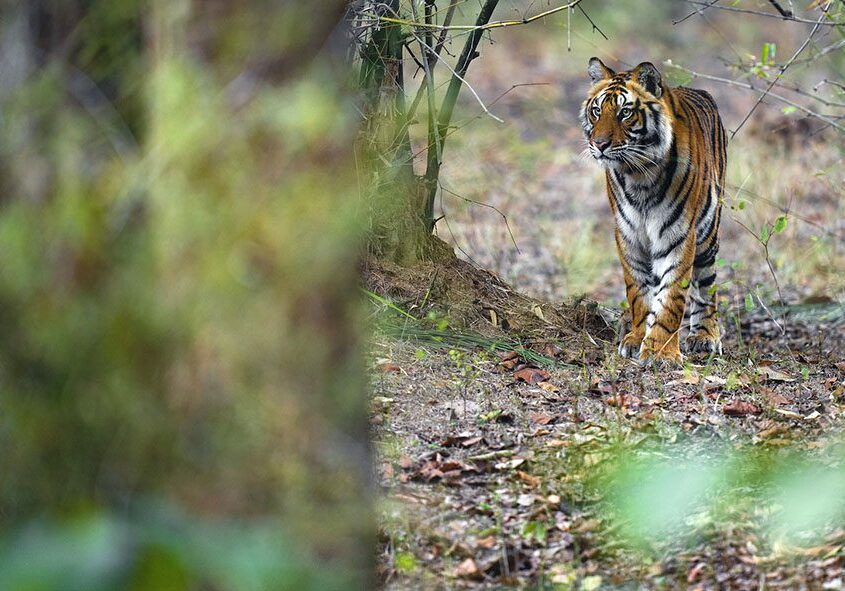
Are tigers coming back from the brink?
For decades, we’ve worked tirelessly to secure a future for wild tigers. Now, as we approach a key milestone in tiger conservation, we need your help again
